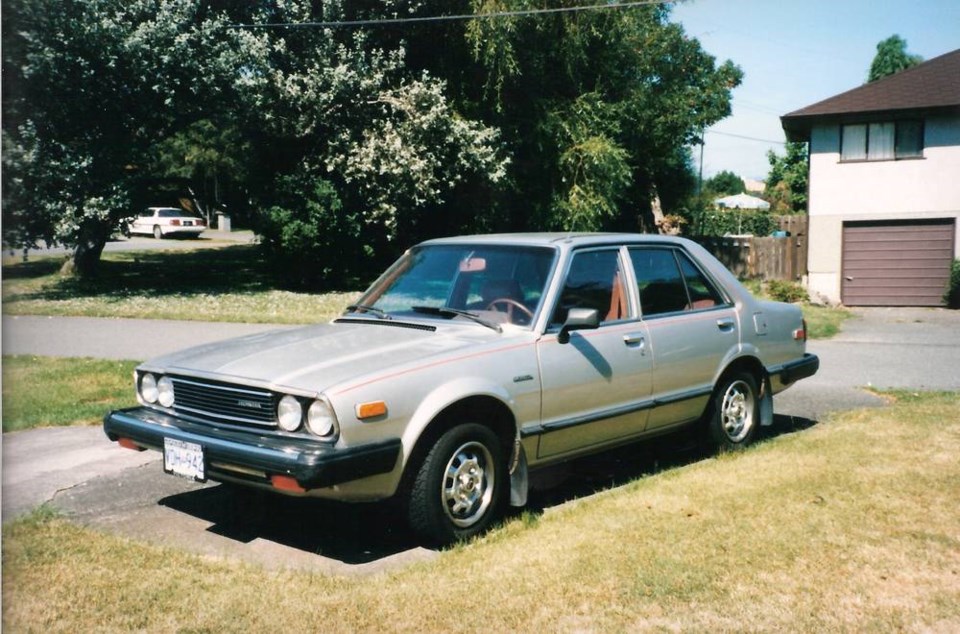Honda was comparatively late getting into the automobile business but when it did it quickly caught up. Founded in 1948 by master mechanic Soichiro Honda as a motorcycle company, Honda had grown to become the world’s leading motorcycle manufacturer when it introduced its first car at the 1962 Tokyo Auto Show.
The tiny roadster not surpassingly embodied strong motorcycle engineering influences like a high-revving, overhead cam, roller bearing crankshaft engine with chain drive to the rear wheels.
But the two-seat market was limited so they introduced tiny sedans that were too small for much acceptance in North America. Realizing this, Honda followed these in 1973 with the larger but still economical and nimble front-wheel drive Civic. It turned out to be a car just right for the times.
By a stroke of luck for Honda the fuel stingy Civic’s arrival coincided with the first 1970 “oil crisis.” Apart from some early rust problems, it proved to have quality as well as economy. While still small, the Civic prepared the way for the launch of what would become Honda’s world-class car, the Accord.
The first Honda Accord arrived in 1976 as a trim two-door hatchback, a kind of cross between a Civic and the Giugiaro-styled Volkswagen Scirocco, the benchmark small sporty coupe of that era.
Although still small at only 4,135 mm (162.8 in.) long with a 2,380 mm (93.7 in.) wheelbase, it was big enough for general use.
The transversely mounted, four cylinder overhead cam engine, like a larger version of the Civic’s, displaced 1,597 cc and produced 68 horsepower. It drove the front wheels through a slick-shifting five-speed manual transmission. A two speed automatic soon became available.
The Accord was an immediate success, making the recently introduced rear-wheel drive Chevrolet Chevette suddenly seem like old technology. It turned out to be a watershed car, proving that small cars need not be Spartan, but could be as luxurious as large ones.
It had such small but appreciated touches as remote hatchback release, instrument panel pictogram warning that a door or the hatchback was ajar, service reminders, a coin holder, side window defoggers and more.
Another welcome feature for option-fatigued North American car buyers was that there were hardly any extras. Honda realized that when building and shipping cars half a world away it’s easier to include everything - even the AM/FM radio was standard - than fill custom orders for each buyer.
Thus what began as a manufacturing convenience proved to be a marketing coup, a revelation to motorists accustomed to seeing the final price balloon when options were totalled up.
Some options were available such as air conditioning and automatic transmission, but not many. As Honda emphasized in its sales brochure: “The Accord is so complete all you need is the key.”
The Accord offered everything most buyers wanted. It was stylish, could accommodate four passengers and was quick and economical. The handling, if not quite as sharp as that of the sportier leaning Volkswagen Scirocco, still felt crisp and responsive to North American drivers. They delighted in the smooth-shifting transmission, light clutch action and power assisted brakes.
Also welcomed were the Accord’s standard tachometer, stalk-mounted lights/turn signals and wiper switch, intermittent wipers including a rear one, and full carpeting.
These conveniences and luxury features moved Road & Track to opine that the Accord “… is probably the best automotive buy in the U.S. today.”
The performance was not outstanding but it was adequate. R&T (8/76) recorded zero to 97 km/h (60 mph) in 15.4 seconds and top speed of 145 km/h (90 mph). This was respectable but was overshadowed by the Scirocco’s zero to 97 (60) of 12.7 and top speed of 164 km/h (102 mph). Fuel economy was in the 35 to 40 mpg range.
In 1978 Honda significantly widened the Accord’s market with a four-door sedan that was even more appealing than the hatchback. The “little limo” soon became the benchmark in the small sedan class.
The Honda Civic had established Honda as a serious contender on the world automotive scene and the Accord consolidated it. Along with such cars as the Toyota Corolla and the Datsun 510, it made North American automakers realize that the Japanese threat was serious.
Over the decades the Accord grew from a smallish sized entry to a full-fledged member of the mid-size car class. In the process it became the quintessential North American family sedan that now battles for top sales positions with such worthies as the Toyota Camry.
It all flowed from those jewel-like little Accord two-door hatchbacks and four-door sedans that began arriving in North America in the 1970s. The Accord was then and is still today setting a standard for quality and driving dynamics against which others are judged.



